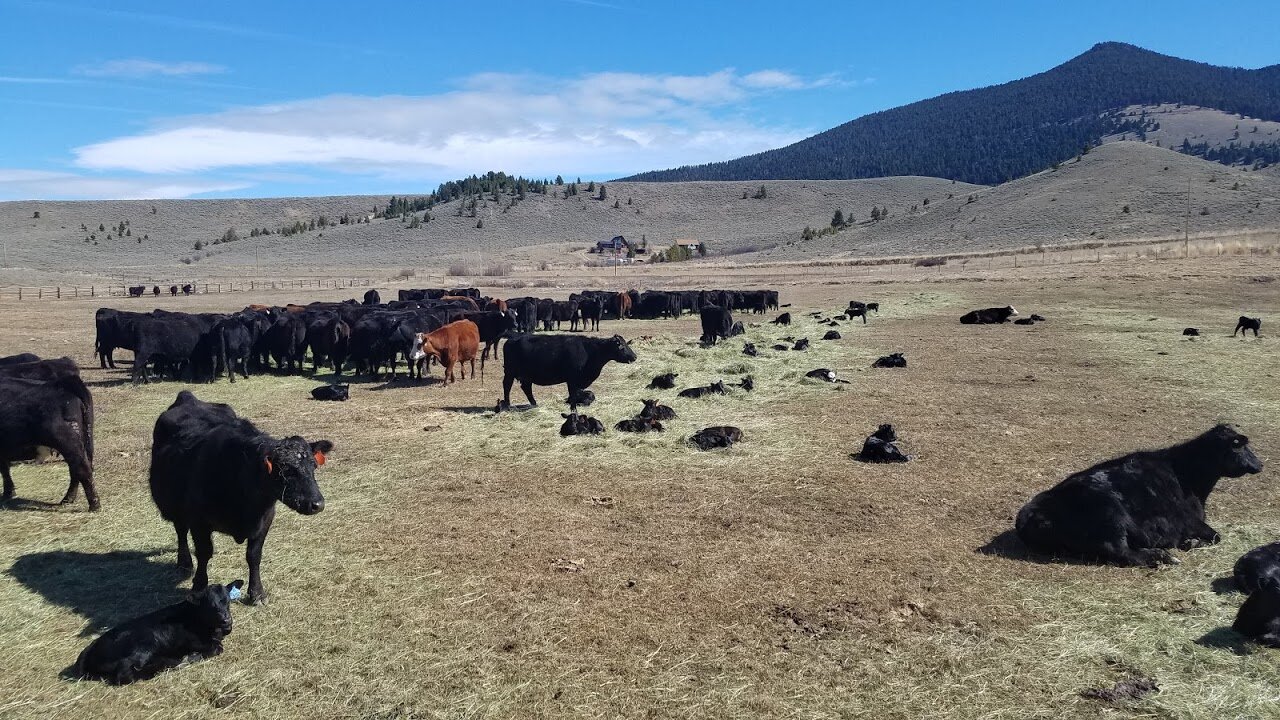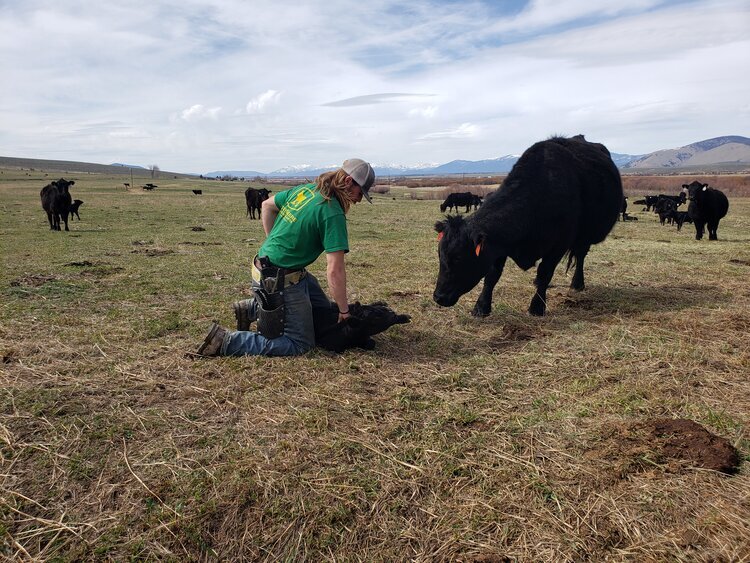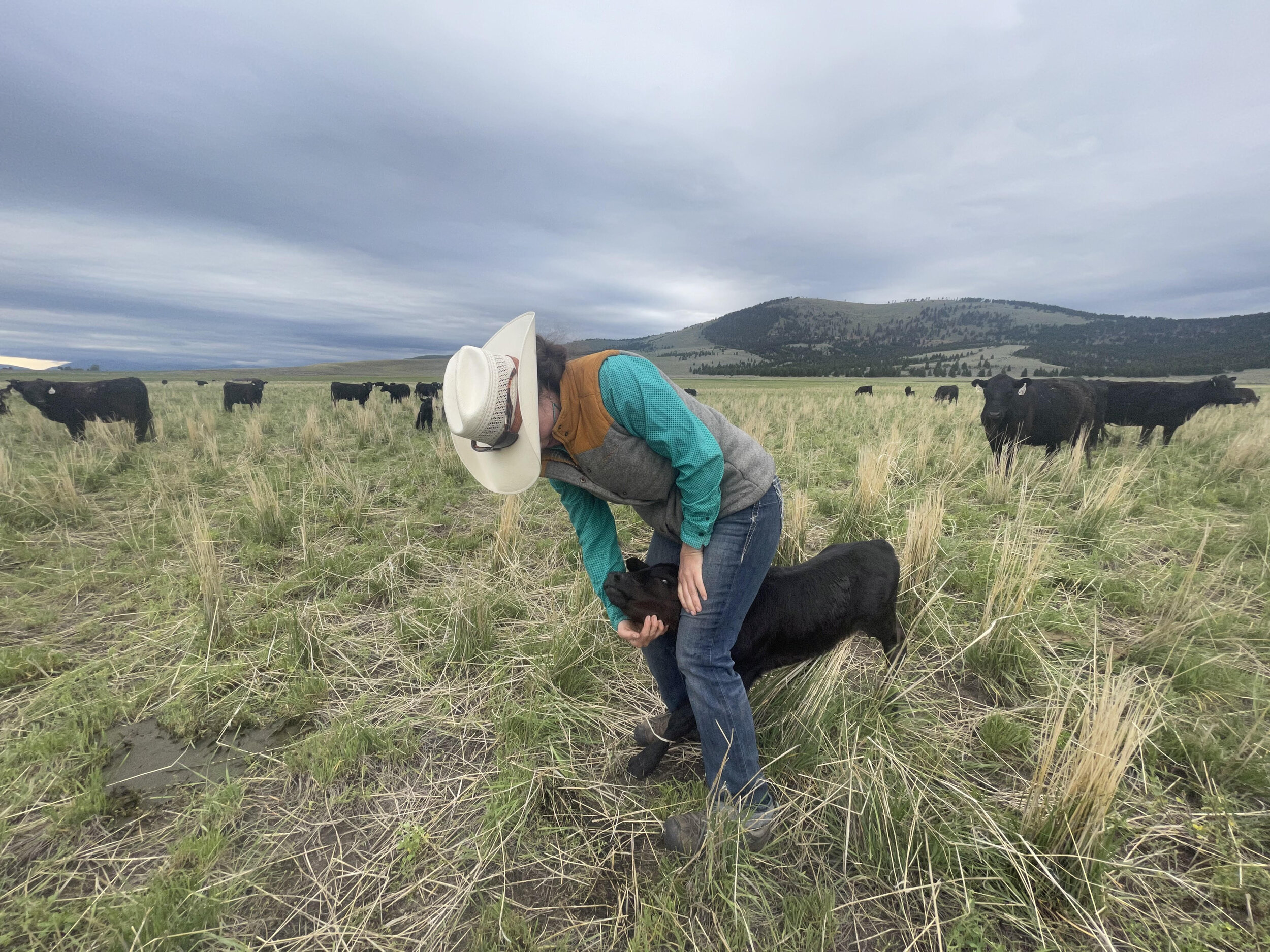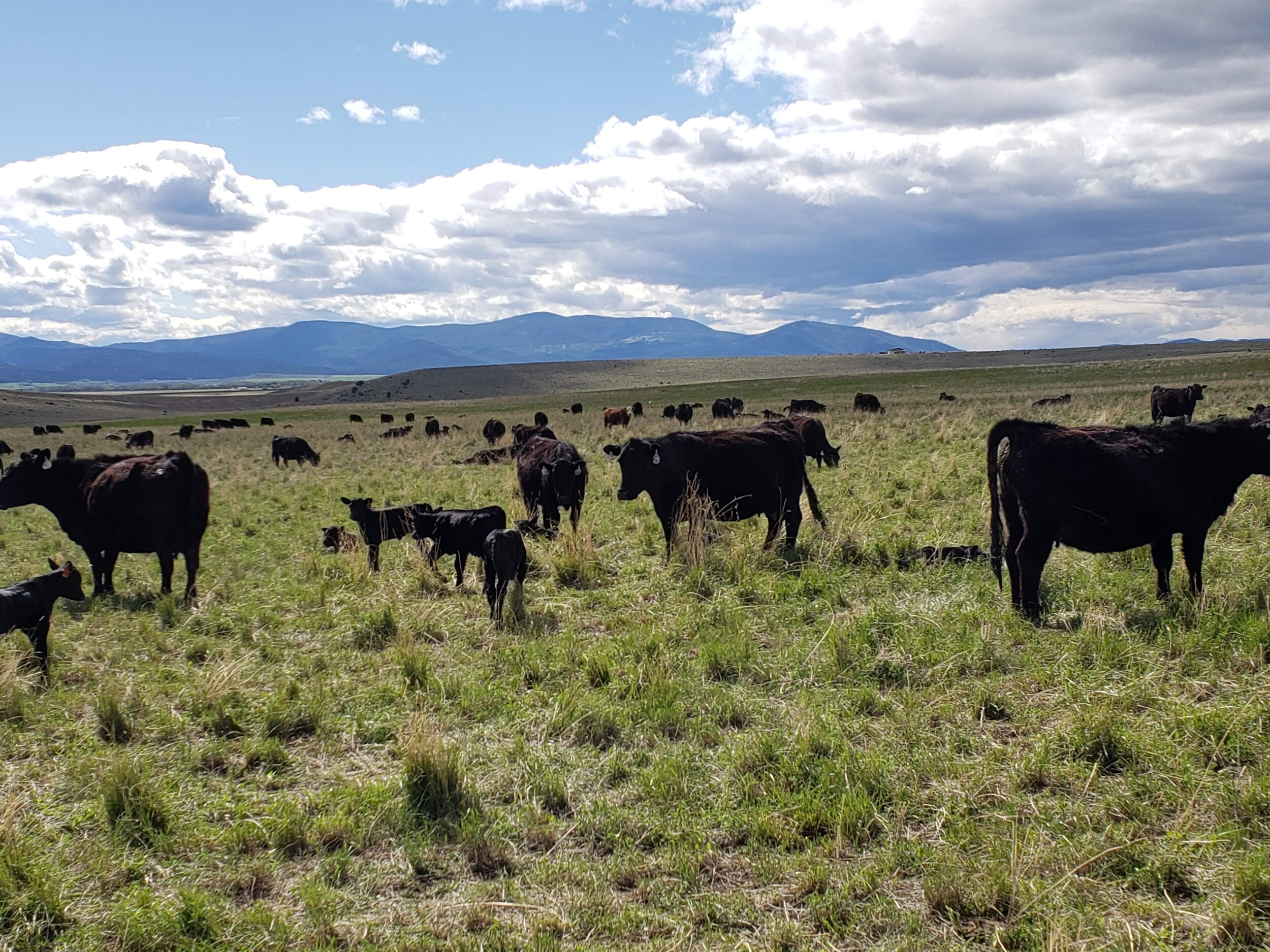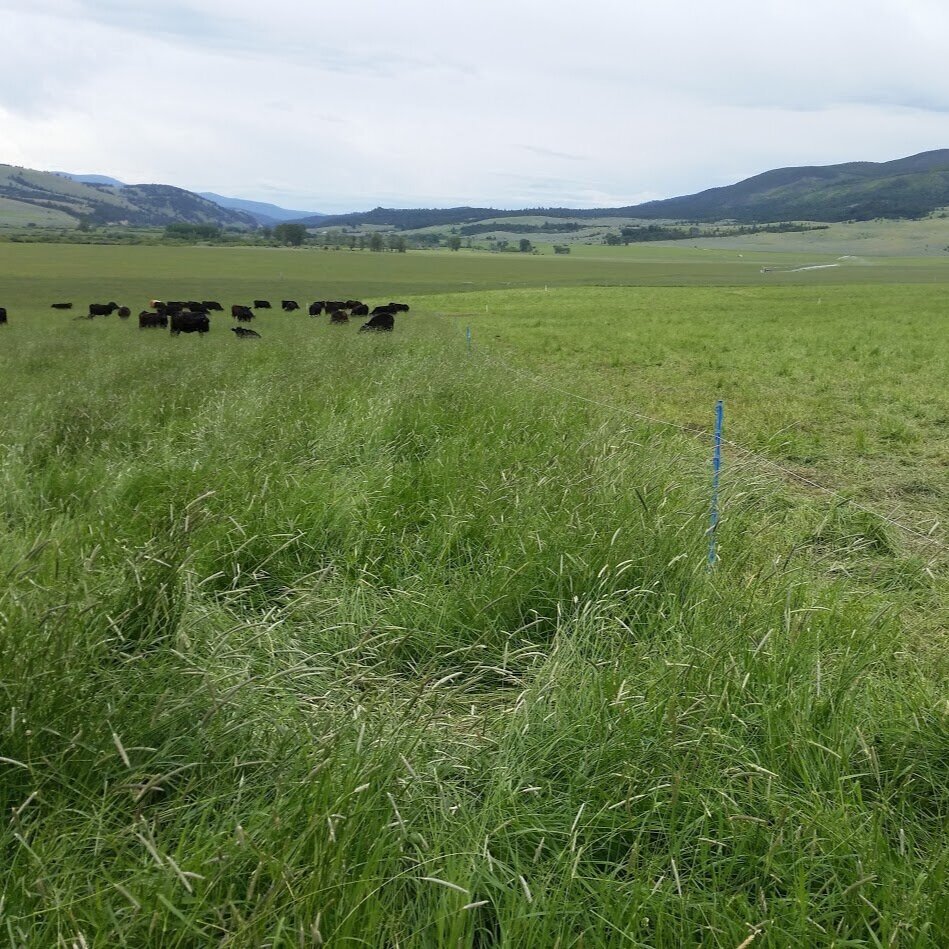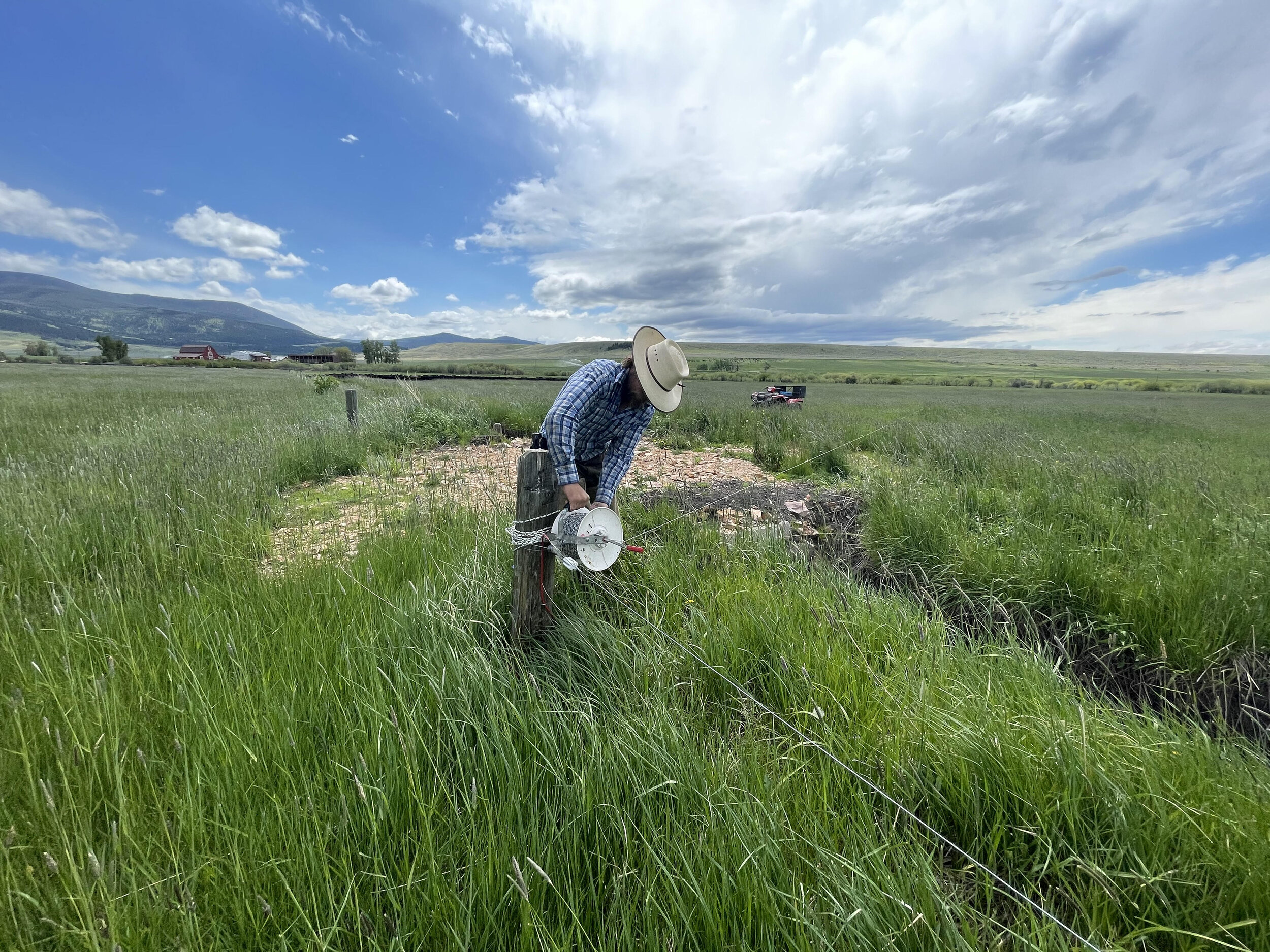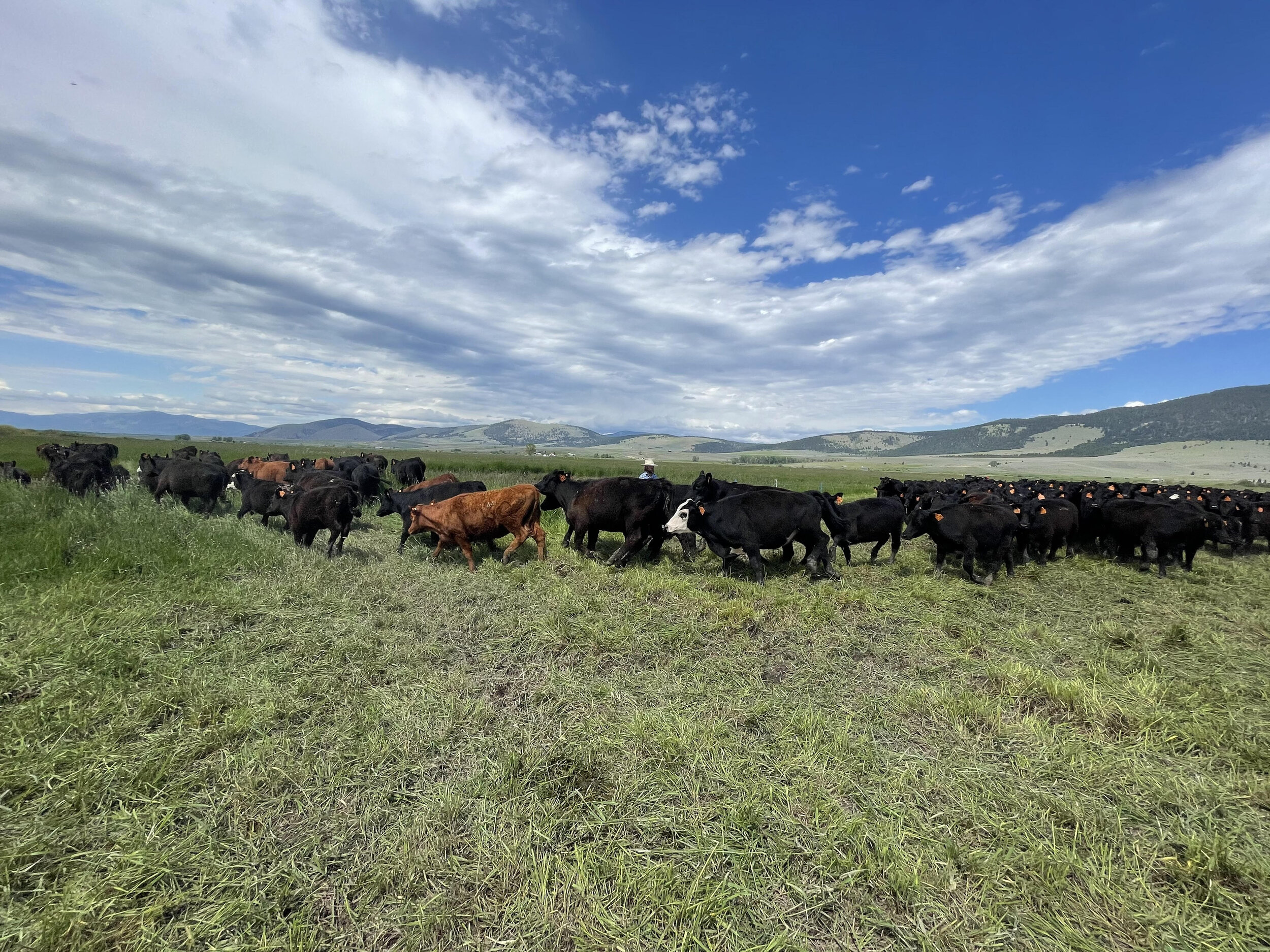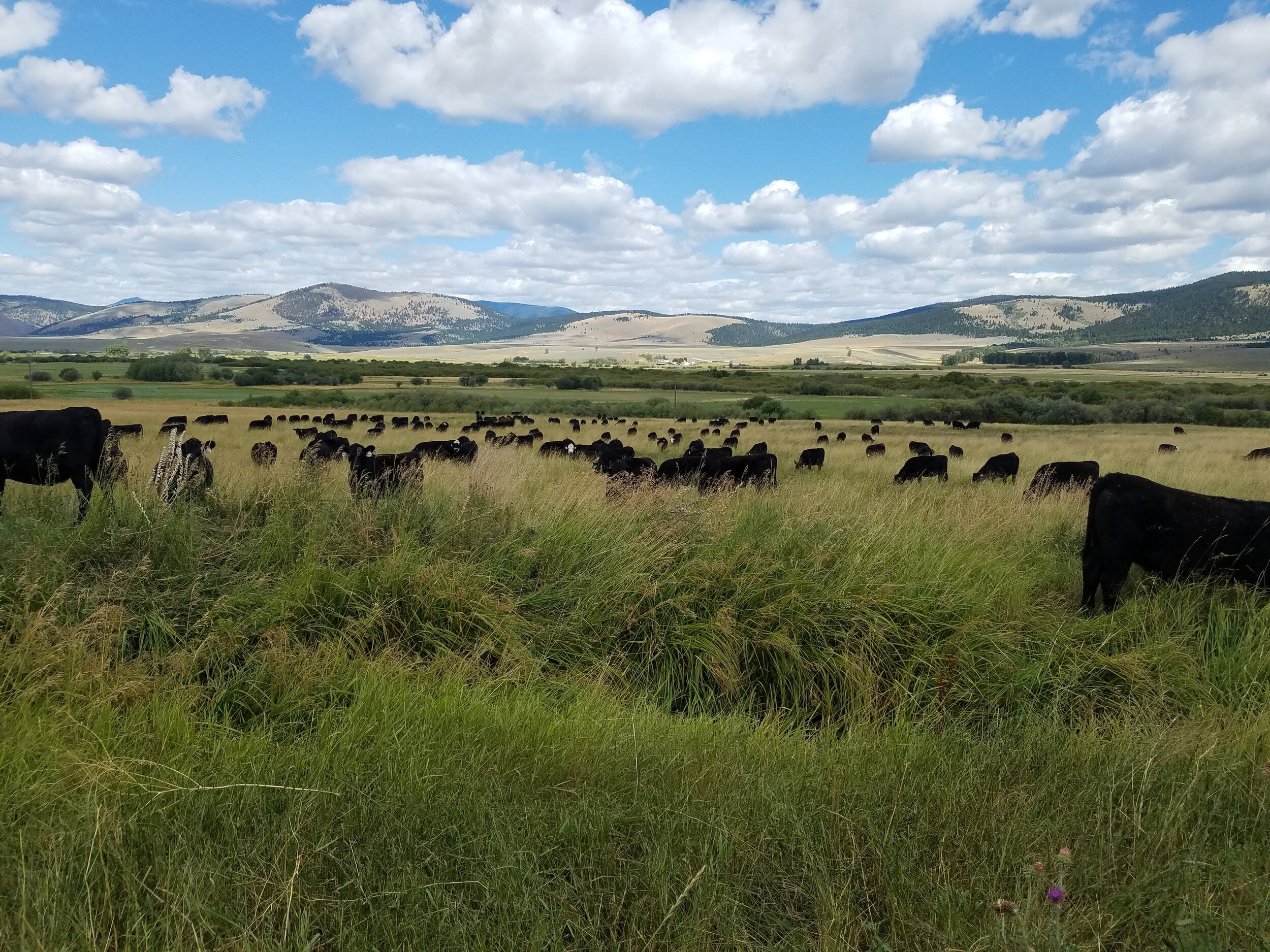From Birth to Butcher
By: Kate Clyatt
Have you ever seen that episode of Portlandia where two diners quiz the waitress about the life of the chicken on their menu? Where did the chicken live? What was its name? Did it have many chicken friends? Well, change chicken to beef, and we’ll delve into some of those questions you may have about the steak you’re about to enjoy.
Many of us are concerned about the welfare of the animals that end up on our dinner plate. We may also be considering the environmental impacts of that animal - how much water was used over its lifespan, what it’s impact on the climate was, what are the working conditions of the people that grew and processed that meat? These are good questions to ask, and we’re here to help illuminate some of these queries by sharing with you the life of our grass finished beef. Our beef are raised 100% on pasture, are never given antibiotics or growth hormones, and are grazed using our best knowledge of regenerative agriculture practices. We’re proud of our beef program, and wish each and every one of you could come out to the ranch and see the development of our grass-finished beef, start to finish. In the future, we hope to share some footage or offer some ranch tours. Until then, we’re hoping this gives you a glimpse into the life of the protein that sustains and nurtures you.
We’ll start with birth. If you’d like a more in depth look at calving season on the ranch, check out our blog post here. However here is the short version. Our calves are born in the spring and early summer out on pasture. Our main herd of cows starts calving around the middle of April on our irrigated meadows where we are still feeding hay. Once the grass is ready to graze around the second week of May, our later calving mature cows and first calf heifers start calving out on dryland pastures.
We try to interfere with the natural calving process as little as possible, although we are always on standby if a cow needs assistance birthing. Within the first day of birth, we will catch the calf to give it it’s first vaccine shot, tag its ear with it’s mother’s identification number, and castrate the bull calves using a thick rubber band. We keep a close eye on cows and calves for several weeks to keep an eye out for sickness or problems. Sometimes a sick calf does require doctoring, and any given antibiotics will have their numbers recorded and their ears notched, and are removed from our Grass-finishing program.
We process our calves again about a month after birth, which is when we give subsequent vaccines, tag calves with “EID” tags (electronic identification tags required for third party verification of claims such as antibiotic and hormone free), and address any issues we didn’t catch earlier.
After the calves have been processed, the herd grazes our irrigated meadows and lower dryland pastures, with intensive grazing and moves every 1-3 days, on their way to the mountains. July 1st is when our mountain leases open and when we take the cows to their summer pasture. Our cow and calf pairs spend July and August on the range in the mountains, to be brought back starting in September. Other than supplying salt and mineral, and moving them occasionally, they’re pretty much on their own across thousands of acres of mountain country.
In the fall, we’ll bring them down from the mountains and graze them on some of our hill country and on the regrowth from our hay meadows. Calves that were born earlier in the spring (April, May) are usually weaned from their mothers in early winter; November, December. Those that are born later (June, July), are not weaned until the end of winter; February, March. Towards the beginning of winter, we will sort our calves into groups: steers, heifers, and replacement heifers. The steers are either sold as calves or kept as yearlings to be sold the next fall, depending on current and projected markets. Replacement heifers will join our herd as mother cows the following year. The remaining heifers are typically what we use for the grass-finished beef program.
We try to graze our animals for as long into the winter as possible. However, given our location in the Rocky Mountains, we typically begin feeding hay to our weaned calves in late November or early December. (Our mother cows continue to graze for longer) Calves are wintered on grass and alfalfa hay that is fed out on pasture. The grass hay, and some of the alfalfa hay are harvested on the ranch, and we purchase some additional alfalfa hay from our neighbors. We make an effort to feed the hay mostly back on the same meadows it was harvested from, to return the nutrients back to the soil. We also utilize hay placement to restore certain areas where soil organic matter is low - think of it as a mulch! In some areas we utilize bale-grazing (where you leave the bale whole instead of rolling it out in rows), which concentrates the nutrient deposits from the hay in areas that are deficient in organic matter.
Beginning in May, the calves (now yearlings) go to grazing! We graze our yearlings using principles of holistic management and intensive grazing. The yearlings are moved once daily for most of the summer using a combination of temporary and permanent electric fencing. This type of intensive grazing is good for weight gain of the beef and for soil health. For more information on the benefits of grazing, please check out our blog post on grazing principles. Over the past few years of doing these rotations, we’ve seen an increase in soil and range health within the pastures we use for yearlings.
Once again, our yearlings that are kept for beef spend the fall and early winter grazing regrowth in previously grazed pasture or hay meadows, before going back on hay, usually in early December. Our beef are typically fed about 22-25 lbs of grass hay each day, and do not typically receive any alfalfa supplement their second winter.
Once the grass is ready, around the second week of May, the beef once again go back to grazing. We’ve found that it is important to have animals on an increasing plane of nutrition throughout the finishing process, and have gotten our best results, with the best weight gain and marbling, when moving from grazing irrigated pasture as yearlings to grazing our highest quality dryland pastures as 2 year-olds. In general, we think it takes at least 24 months to reach proper levels of finish on grass, and our first animals will start reaching optimal weight and fat cover for butcher after about a month of grazing in the spring after their second winter.
Every two weeks we hand select animals that have reached optimal levels of finish, evaluating fat cover and body condition, ensuring that we choose animals that will produce tender, marbled, juicy beef. We sort them out of the herd, and haul them that day to our butcher in Superior, MT. (Or occasionally additional processors such as White’s in Ronan) By fall, around 30 months of age, nearly all of our beef are properly finished, but we continue to keep some over the winter in order to maintain a steady supply of beef year round.
At the butcher, the beef are slaughtered, the hide, head, and entrails are removed, and the rest of the animal is hung in the cooler at the proper temperatures to dry age for 14-21 days before being cut and packaged. The packaged meat is then picked back up by us (unless it’s delivered by Superior to one of our patron restaurants or grocery stores), and brought back to the ranch where it is stored in our commercial freezer. A member of our family inventories and sorts all of the beef that comes to the ranch before it gets packed into orders and delivered by our delivery van, or put into the trailer for the farmers market.
We hope you have enjoyed this brief introduction to the life of your beef, and we hope you enjoy the final product! We love raising healthy, sustainable, grass-finished beef for our customers, and appreciate your patronage. In an era with a great deal of options on the meat counter, we know how valuable it is that you continue to seek out our beef products, and we will continue to try to raise the best, healthiest, and happiest animals for your dinner plate.
Kate came to the ranch in 2019 as a New Agrarian Apprentice through the Quivira Coalition and has stayed on as part of the ranch team and soon-to-be family member. Kate splits her time between working on the ranch in many capacities and working on local drought response with the Blackfoot Challenge. Her favorite activities on the ranch include moving cows in the mountains, practicing low-stress stockmanship, and listening to the many stories told during Tuesday morning meetings.

